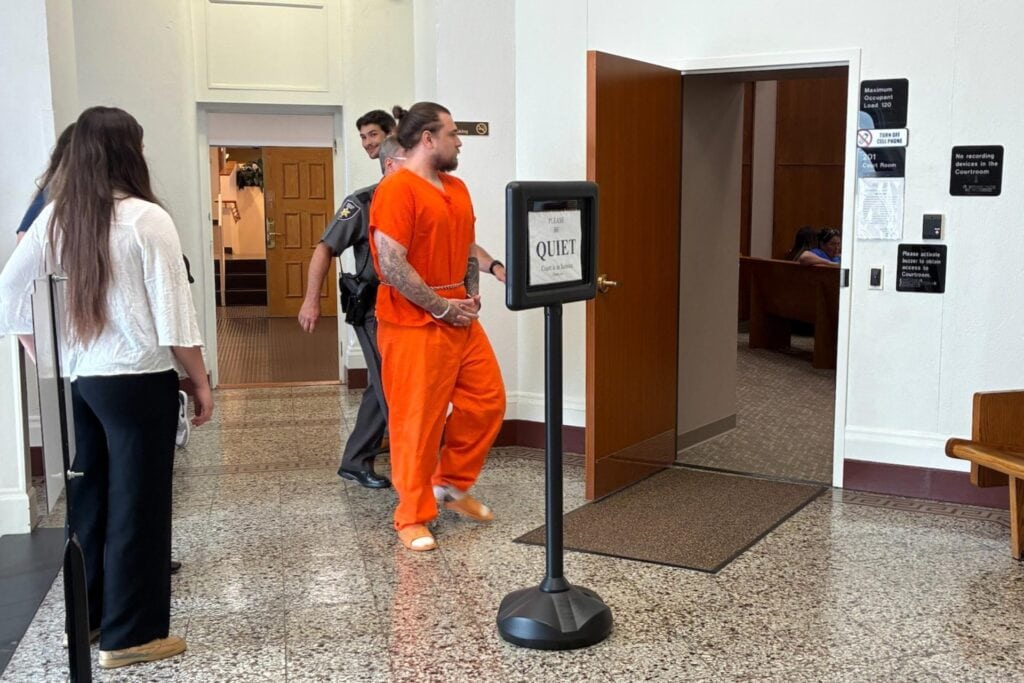Editor’s note: This story was originally published by Mountain State Spotlight. Get stories like this delivered to your email inbox once a week; sign up for the free newsletter at https://mountainstatespotlight.org/newsletter
By P.R. Lockhart, Mountain State Spotlight
As he sat in a car, speaking to a camera shortly after gallbladder surgery, West Virginia Gov. Jim Justice wanted to make it clear that the past few days have been tough. But there was one thing that was keeping him in good spirits: an official $1.8 billion budget surplus.
“We’ve shattered all kinds of records for a surplus beyond belief in West Virginia,” Justice said on Friday as the fiscal year ended. “$1.85 billion, it’s just mind-boggling.”
Alongside tax cuts passed earlier this year, Justice has argued that the state surplus is proof of his strong fiscal management skills. And as he mounts a campaign for the U.S. Senate, supporters like Sen. Lindsey Graham, R-S.C., argue that Justice is a candidate who “will protect your guns and he’s good with your wallet.”
But the state’s budget surplus, to the extent that it exists, does present some problems.
For one thing, the surplus is caused by a number of factors converging in a way that is unlikely to happen again in the coming years. And Justice has focused on paying for expensive tax cuts over addressing urgent needs in the state, leaving several important state services underfunded – despite having money that could help.
Much of the surplus comes from incredibly volatile severance tax collections
To start, the single biggest contributor to this year’s budget surplus is severance tax collections: taxes applied to the extraction, production and sale of natural resources like coal and natural gas. This year, West Virginia collected nearly a billion dollars in severance taxes, more than double what it collected in 2020.
But there are problems with severance taxes making up so much of the budget surplus. As Mountain State Spotlight explained earlier this year, severance tax collections are highly dependent on the price of resources like coal and natural gas.
When those prices go up or go down, severance tax collections rise and fall as well. This makes the severance tax highly volatile and not something the state can count on to be a consistent revenue source.
There are signs that natural gas prices, which have surged in recent years, are already beginning to drop considerably, meaning that the state may not collect as much in the future.
The surplus relies on artificially low revenue estimates – and temporary federal aid
While severance taxes are outside of Justice’s control, he has used his control over state revenue projections and the annual budget to help create the surplus.
The governor creates a revenue estimate that projects how much money the state is expected to bring in from taxes during a particular year. Anything over the estimate becomes surplus.
The West Virginia Center on Budget and Policy argues that Justice has intentionally kept these revenue estimates low in recent years by projecting that the state will bring in fairly small amounts of money and then touting a “surplus” when the state brings in more than those low-balled figures.
These projections also affect the state budget. When lawmakers create their own proposed budget, they cannot exceed the state’s revenue estimate as set by the governor, unless they also pass a tax increase.
Justice has maintained flat budgets – where state agencies receive about the same amount of money each year. While he argues that this has strengthened the financial position of the state, critics note that flat budgets effectively leave agencies with less money than they had in previous years because of inflation and increased needs.
“The governor has essentially gamed the process by not using economic forecasting, or realistic estimates of the revenues that are expected, but what they ideologically want the budget to be,” said Kelly Allen, executive director of the West Virginia Center on Budget and Policy.
The state has also used one-time federal pandemic relief money to temporarily patch some problems, like childcare subsidies, instead of putting more money into the budget.
And as Justice trumpets the surplus, state agencies are struggling financially, from difficulties getting more teachers in classrooms, to a serious budget shortfall at West Virginia University that is leading to program cuts and faculty layoffs.
New tax cuts will reduce the state’s surplus revenue moving forward. Further cuts could be on the way.
But for some local organizations and national policy groups, the biggest problem with West Virginia’s surplus is that Justice and legislative leaders used the temporary gains to justify a large, and permanent, income tax cut. And West Virginia is far from the only state doing this.
“States nationwide have been on a tax-cutting spree over the past three years coming out of the pandemic and subsequent recovery,” said Wesley Tharpe, the senior advisor for state tax policy at the Center for Budget Policy and Priorities. “Many of these cuts are extremely costly and benefit houses at the top of the income scale, and West Virginia is really a cornerstone example of this trend.”
During the legislative session, Justice and several lawmakers argued that the state’s extra revenue should be returned to taxpayers, and that this would attract businesses. The tax cut package that passed will reduce state revenue by roughly $750 million a year. In the coming years, a trigger mechanism in the law could cut the income tax rate even further, potentially all the way down to zero. If that happens, the state could lose as much as $2 billion in annual revenue.
While several states are enjoying revenue surpluses currently, things could change very soon.
“State revenue trends are reversing,” said Aidan Davis, the state policy director at the Institute on Taxation and Economic Policy. “It’s clear that state budgets are not going to be flush in the way that they have been because lawmakers will have to get back to weighing tradeoffs in a serious way.”
In West Virginia, lawmakers will have to decide what to pay for as the state collects less in income taxes, the largest and most stable source of tax revenue, and also one of the most equitable.
State revenue officials hope that West Virginia will collect significantly more in sales tax as people spend the money now staying in their paychecks, but the average West Virginian isn’t actually getting that much money from the tax cuts. And tax cuts in West Virginia haven’t historically led to a flood of new business activity.
Experts caution that using so much money on tax cuts will likely leave the state with less to work with in the future.
“Most people move to states for jobs, or for good schools, or for safe communities,” said Allen. “And we’re undermining all of those things if we’re slashing the revenues that pay for them.
Reach reporter P.R. Lockhart at prlockhart@mountainstatespotlight.org.












